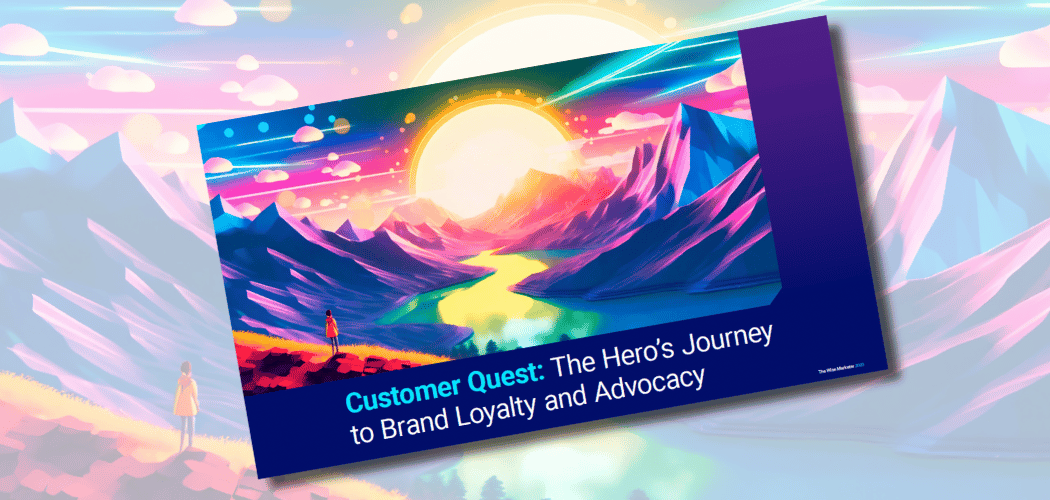New Mando-Connect and YouGov Research Released
Mando-Connect and YouGov have just launched the second edition of their “Understanding Loyalty in Europe” whitepaper at The Loyalty Summit CXM in Copenhagen. This new research aims to provide loyalty marketers across Europe with critical insight to optimise their approaches. It explores new data on the appeal and impact of loyalty programmes across 24 European markets, amplified with insight, stories and case studies from a community of 10 European loyalty experts.
The Research Highlights
The research explores 3 datapoints that aim to understand the appeal of loyalty programmes across Europe:
- Do people think that loyalty programmes are a great way to reward customers?
- Do people think that every brand should have a loyalty programme?
- When given the opportunity, will people join a loyalty programme?
It shows that the majority of adults across Europe are big fans of loyalty programmes. 55% think loyalty programmes are a great way to reward customers. The British remain the biggest fans of loyalty programmes (74%, up from 70%). Followed by the Polish (67%), the Irish (66%), the Germans (65%) and the Slovakians (65%).
It also shows that 42% of adults across Europe think that every brand should offer a loyalty programme. The Irish, the Bulgarians the British still sit at the top of list with 56%, 55% and 54% respectively, Bulgaria and Romania have joined Britain with 54% of the population thinking all brands should offer loyalty programmes. At the bottom of the list comes Denmark (17%), The Netherlands (20%) and then Finland and Sweden, both with 31%.
And finally, for appeal, the research shows that 35% will join loyalty programmes each time they are given the opportunity. The Polish are the most keen market (53%), followed by the Norwegians (47%), the Irish (45%) and the Italians (44%). The Dutch play harder to get (only 16% will join each time they are given the opportunity), followed by the Danish (20%) and the Swedish (25%).
The research then goes on to investigate 4 key impact datapoints that span key transactional and emotional KPIs:
- Impact on Loyalty
- Impact on Spend
- Impact on Emotional Connection
- Impact on Recommendation
It found that Loyalty programme impact remains very positive in 2024. 42% of adults across the 24 European markets say that membership makes them very loyal (vs 43% in 2023), 35% say they are more likely to recommend the brand (vs 36% in 2023), 31% are more emotionally connected (vs 33% in 2023) and 29% will spend more with a brand when a member of its loyalty programme (vs 29% in 2023). There are significant variations by individual market which are outlined in detail in the paper.
The research also includes the 2023 benchmark data on membership of loyalty programmes across Europe. This will be updated in the last quarter of 2024 with the 2024 membership data, but the authors didn’t want to hold back the appeal and impact data until then! And then lastly, the report rounds out with the critical Loyalty Gauge dataset – that gives loyalty marketers a snapshot of loyalty engagement by market.
Case Studies and Market Experts
Where this research really comes into its own is in the inclusion of commentary from a community of loyalty experts. The paper includes 10 deep dive market case studies for The Czech Republic, Denmark, France, Germany, Great Britian, Hungary, Italy, The Netherlands, Poland and Sweden.
Here is just a taste of what you’ll learn from the whitepaper:
German Expert, Nicole Wilhem of get focused states: “It is up to brands to use the potential German customers are offering through their love of loyalty programmes. Germany still is a very transaction-based loyalty market with coalition programmes (e.g. Payback or DeutschlandCard) and stand-alone programmes (e.g. Shell Club Smart, Douglas Beauty Card, or H&M Member programme) that use the earn-burn mechanic. It remains important for brands to evolve their programmes to maintain an engaging, valuable, and meaningful programme for members to attract new members.”
Whilst the Netherlands Expert, Rik Luttmer of Loyalty Chiefs, says: “The Netherlands has a deeply rooted loyalty program history dating back over a century. Everyone has grown up with them, and today, they are ubiquitous. This loyalty cultivation has made the Dutch far from newbies, expecting programs to be not only super relevant but also an integral part of product and service offerings.”
There are also 3 gold star European Loyalty Case Studies featured in the paper, Oracle Red Bull Racing’s The Paddock, Canon Club and the Matas programmes.
3 Big Insights From The Research
1. Loyalty has played an important role during the cost-of-living crisis
The economic landscape globally has been a difficult one with inflation at an all time high, the cost of living increasing faster than wages and household budgets really feeling the squeeze. This is where loyalty programmes have stepped in. In Great Britian, we’ve seen loyalty programmes introduce member prices to help customers save more on each visit and also loyalty has taken centre stage in marketing comms. Programmes like Lidl Plus have centred a lot of the ATL advertising on their loyalty programme promotions. This also rings true in France, where expert Michael Flacandji of The University of Bordeaux states, “Given the current high inflation rate, consumers are placing greater importance on the benefits provided by their loyalty programmes. Programmes are increasingly viewed as an anti-inflation weapon, particularly among customers who have experienced a decline in purchasing power.”
2. Functional loyalty remains, but customers want brands to build a more emotional connection
A great case study of a brand moving away from functional loyalty, especially in a market where functional loyalty remains the norm, is Matas in Denmark. The retailer saw an opportunity to revamp their loyalty programme moving away from focusing on selling to focusing on helping and delighting customers. They have introduced personalised communications, advice and added in additional convenience mechanics to put a long-term focus on emotional loyalty and customer lifetime value rather than a short-term sales focus. This has proven to be successful and Matas features as one of the three programme case studies in the whitepaper.
3. The rise of gamification
Many of the market experts commented on the fact that gamification and promotional mechanics were on the rise in the last year as loyalty programmes look to reward their customers with more. Polish expert, Pawel Dziadkowiec of Open Loyalty, mentions that Polish programmes are looking toward Gamified promotions like in-app lotteries and scratch cards, along with short, attention-grabbing offers using countdown clocks on both the mobile app and web. He’s also seen Polish programmes utlise technology and their loyalty apps to engage customers more. The Italian loyalty market is very fragmented due to the nature of small local shops in the villages and only large retailers available in the bigger cities. This makes the market very interesting to examine, but loyalty managers have put improving or launching an app as one of their top priorities for 2024. The last year saw the increase in gamification in the market in terms of points and levelling up so it will be exciting to see how consumers react with the launch of new and improved tech. Cristina Ziliani, University of Parma.
For more insights and a deep dive into the 24 European markets download the whitepaper here.
By Charlie Hills, Abigayle Blanshard and thanks to YouGov and Nicole Wilhem of Get Focused, Rik Luttmer of Loyalty Chiefs, Michael Flacandji of The University of Bordeaux, Polish expert, Pawel Dziadkowiec of Open Loyalty, Cristina Ziliani, University of Parma.




